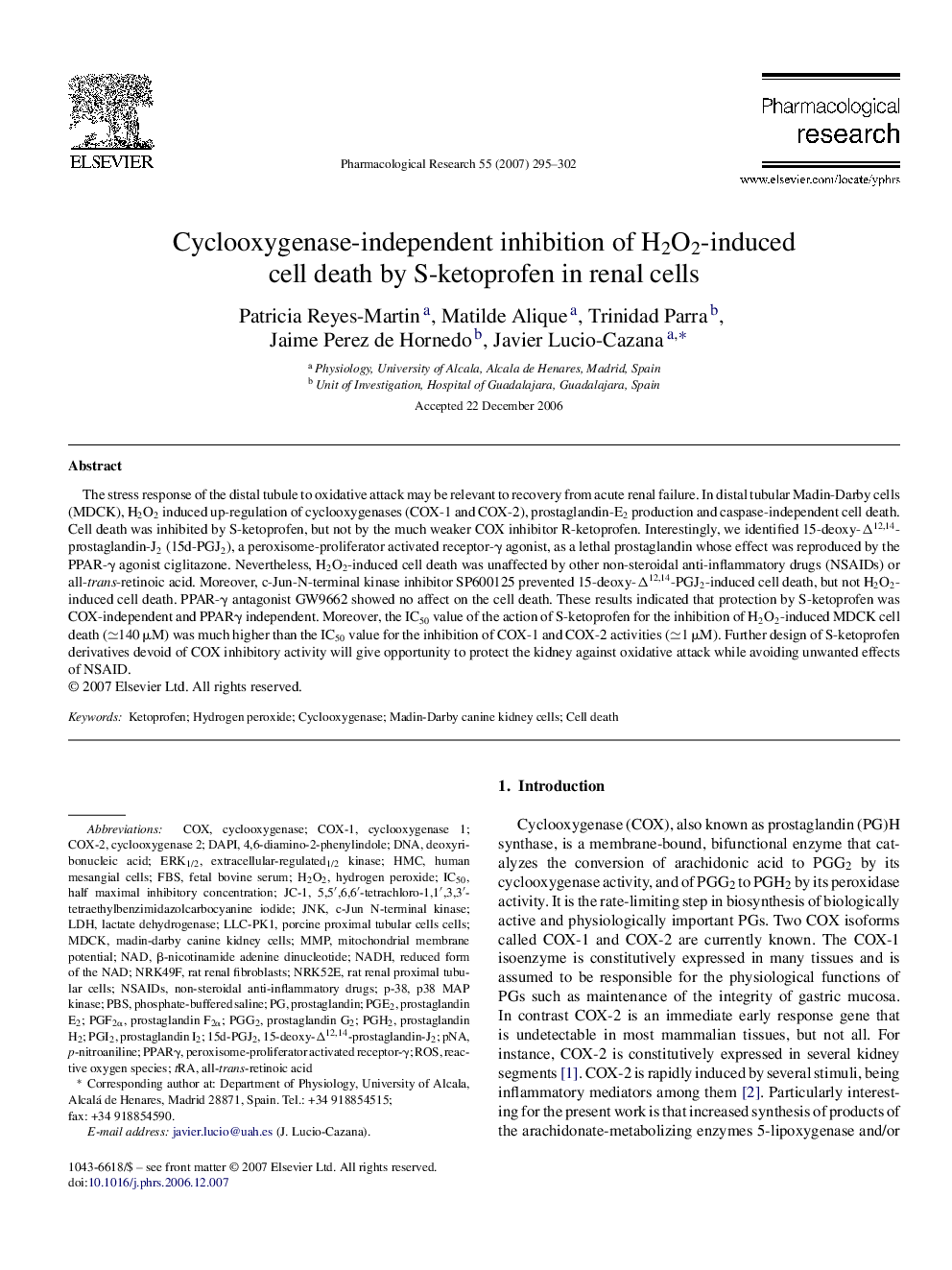| Article ID | Journal | Published Year | Pages | File Type |
|---|---|---|---|---|
| 2562467 | Pharmacological Research | 2007 | 8 Pages |
The stress response of the distal tubule to oxidative attack may be relevant to recovery from acute renal failure. In distal tubular Madin-Darby cells (MDCK), H2O2 induced up-regulation of cyclooxygenases (COX-1 and COX-2), prostaglandin-E2 production and caspase-independent cell death. Cell death was inhibited by S-ketoprofen, but not by the much weaker COX inhibitor R-ketoprofen. Interestingly, we identified 15-deoxy-Δ12,14-prostaglandin-J2 (15d-PGJ2), a peroxisome-proliferator activated receptor-γ agonist, as a lethal prostaglandin whose effect was reproduced by the PPAR-γ agonist ciglitazone. Nevertheless, H2O2-induced cell death was unaffected by other non-steroidal anti-inflammatory drugs (NSAIDs) or all-trans-retinoic acid. Moreover, c-Jun-N-terminal kinase inhibitor SP600125 prevented 15-deoxy-Δ12,14-PGJ2-induced cell death, but not H2O2-induced cell death. PPAR-γ antagonist GW9662 showed no affect on the cell death. These results indicated that protection by S-ketoprofen was COX-independent and PPARγ independent. Moreover, the IC50 value of the action of S-ketoprofen for the inhibition of H2O2-induced MDCK cell death (≃140 μM) was much higher than the IC50 value for the inhibition of COX-1 and COX-2 activities (≃1 μM). Further design of S-ketoprofen derivatives devoid of COX inhibitory activity will give opportunity to protect the kidney against oxidative attack while avoiding unwanted effects of NSAID.
